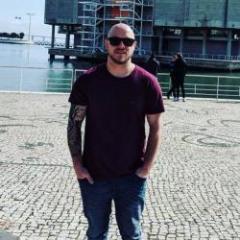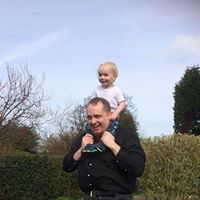Search the Community
Showing results for tags 'alphas'.
-
Hey everyone! My intention in creating this topic is to be able to contribute to the improvement of the Brushes, Alphas, Stencils and Textures system for 3D-Coat. Since @Andrew Shpagin commented that he was developing a new system of Brushes, then who knows, this topic could help in some way and at the same time you can comment, enrich and further strengthen this subject that is of the extrem importance for all of us who are users of 3D-Coat. I have sculpted a lot in 3D-Coat which is a fantastic program, especially in Surface mode and I can tell you all in all sincerity that I really missed a lot of important tools and functions during my work and I believe most of you too. Please do not misunderstand me, but on several occasions, I was a bit discouraged by the lack of tools and functions in 3D-Coat and thus making me take my work to other programs to be able to move on with my work. I know it's healthy to have a workflow that involves other programs, but honestly taking your work to ZBrush to be able to perform certain functions is very frustrating. In my head it does not make sense to have to get a ZBrush license just to complete my work that I do with a lot of affection inside 3D-Coat. So with this feeling, I would like to suggest and share some suggestions that could make a big difference in our work related to this area. Actually, it would be a lot of suggestions, but I'm going to get caught up in what seems to me to be the essential and really make a difference in our work. --------------------- So, shall we start? ----- 1) Alpha and Textures for 16 Bits: --> VERY IMPORTANT! I believe one of the major important steps for 3D-Coat would be the program to accept to work with alphas, stencils and textures with 16 bits. This will help greatly in the process of sculpting and painting taking the program to a level of excellence and would prevent the surface of the mesh from becoming strange through alphas and textures of 8 bits. Please see a quick comparison of the same Cube created in ZBrush with 500 thousand polygons and then this cube was imported to 3D-Coat for the application of the same alphas that were used in ZBrush. In this test, you can see that in all examples in 3D-Coat (located to the right), the surface of the mesh showed more noises, pixallated effect and generated some imperfections in the geometry of the mesh (bad geometry). The reason for this is because 3D-Coat only works with alphas and 8 bit textures that limits the program in the definition and quality when applied to the surface of the mesh, since 8-bit grayscale images which contain 256 gray levels. In ZBrush examples (located on the left) you can see that the surface of the mesh has a better quality, it has an excellent smoothing definition (not having the pixelated effect) and does not generate a geometry with problems on its surface, since 16- bit images which contain over 65,000 gray levels. In my opinion, 3D-Coat switching from 8-bit to 16-bit would give users an incredible and spectacular detailing power (whether in the area of sculpture or in the painting area) similar or even better than what we find in ZBrush. ----- 2) New Alpha Pallete: (These functions, if implemented, could be part of the Paint Room as well. ) I think 3D-Coat could improve a lot in the area of alphas. This suggestion for a new Alpha-related palette would bring the user important and useful functions as well as an instant preview for the user to observe the changes that would be made to the alpha being manipulated. -- Features and Functions: . Flip H: It would flips the alpha left-to-right, making it a mirror-image of itself. . Flip V: It would flips the alpha top-to-bottom, making it a mirror-image of itself. . Tiles H: The H Tiles would tile the selected alpha along the horizontal access. The H Tiles could have a different value then the V Tiles to would create unique tileable alphas. . Tiles V: The V Tiles would tile the selected alpha along the vertical access. The V Tiles could have a different value then the H Tiles to would create unique tileable alphas. . Offset H: The Offset H would offset the image horizontally. . Offset V: The Offset V would offset the image vertically. . Distort Image: The distort image would be the same found in the Preview Options of Stencils and Smart Material. This would works similar to liquify brush of photoshop. . MidValue: (Very IMPORTANT feature) - Mid Value would set the zero displacement value. If would set to 1, then white would be considered zero displacement and all sculpting would push in on the model. If would set to 0, then black would be considered zero displacement and all sculpting would push out of the model. Setting Mid Value between 0 and 1 could allows you to sculpting in and out at the same time. . Surface: (Very IMPORTANT feature) - The Surface button mode would automatically defines the best middle gray value for your alpha. It would allows you to add details from the alpha to your sculpt without destroying details already on the surface. . Filters: Curves, Levels, Dodge, Burn, Threshold, Invert, Gaussian Blur, Motion Blur, Unsharp Mask, Noise e etc... The idea of the filters would be to completely refine the Alpha. You could choose how many filters were needed and these filters would appear in the order you choose in the list on the side. The user through the Eye button icon could or could not see the Filter, thus the filter would become active or not. The user could delete, duplicate and change the order of the filters in the list. Just as you could save and load the list with the filters and their respective properties that were previously configured. The user could create a new alpha from the list that would appear in the Alphas palette. And best of all is that this filter would be non-destructive, all properties and values would be permanent and would be changed at the time users wanted. ----- 3) Alpha Capture from sculpt: Capture Depth information in 16 Bits to create Alphas with ease. To make life easier for the user and further improve the creation of alphas within 3D-Coat, this new tool through a function similar to that of programs that capture the computer screen by dragging a rectangle, would be able to capture the information of the Depth of the geometry surface and could efficiently generate a 16 Bit Alpha of that surface of the sculpted mesh. This generated Alpha would automatically appear in the alphas palette. ---> Important New features for better Brushes control: ----- 4) Imbed and Gravity: - Imbed: (very IMPORTANT feature) The Brush Imbed would control the embed of selected brush. Brush Imbed would gives a brush a definite control on how a brush would interact with a surface. This would allow a slight deformation on the surface or a more extreme deformation on the surface. - Gravity: It would allows you to add gravity to your brush strokes, giving it a draping effect. Through an Orientation function, gravity could be oriented to the Z axis and thus change the direction of gravity. ----- 5) Topological area of influence function for the Move Tool and Pose Tool: (Very Important feature) When the user activates this option, the surface of the mesh would have a restricted degree of influence to perform the deformation of the mesh surface. Example: Close or open the eyelids (when moving the upper eyelid, the lower eyelid would not be moved) or the mouth (when moving the lower lip, the upper lip would not be moved) according to the area of influence of the brush configured through properties that would aid in the refinement of this function. Since 3D-Coat is not attached to a topology, I had thought the following solution to this problem would be the possibility of 3D-Coat using the Calculation of Curvature used in the Smart material system to be able to identify the surface of the model and thus 3D-Coat could have concrete information on how the program could restrict an area, even if that area is in contact with another area. ----- 6) Changes made to Proxy Slider could have compatibility in Sculpt Layers: At the moment, when the user works with models at any resolution in the Proxy Slider and returns to the normal model, all layers in the Sculpt Layers are lost. ----- 7) Clip Mask Layers on Sculpt Layers. (Very Important feature) This would be really important for detail control on the surface of the mesh in a non-destructive way. ----- 8. The Snake, Spike, ToothPaste and Muscles objects could have better compatibility in Surface Mode (so there are no problems stopping the program or at times not accepting the operation) and a very important thing, they could be compatible with Sculpt Layers. I've already emailed @Andrew Shpagin about all of these suggestions. There are many other functions and tools I could list here, but in my opinion, these suggestions explained above, would already give all artists who use 3D-Coat a huge improvement in the work. What do you think? Please help make it happen! Thank you
- 6 replies
-
- 2
-

-
- improvement
- brushes
-
(and 6 more)
Tagged with:
-
I am struggling to find out how to make alphas for my brushes for use when sculpting in the Voxel room. I have seen an old tutorial by Javis but I don't know if this still applies. He basically shows that alphas are made of 4 layers 'Color', 'HeightMap', 'Specular' and 'EraserMask'. Does this still apply? My last question is, where do I save my alphas once I have made them in Photoshop? I see in 'My Documents' there is 2 folders '3D-CoatV3' and '3D-CoatV45'. Inside '3D-CoatV3' there is only one folder called 'Exchange'. Inside '3D-CoatV45' there is a bunch of folders. I don't know which one I should save my brush alphas to. I would like to make my own folder so I can differentiate the standard brushes from my own custom brushes. Is there a way to do this and if so where would I place that folder with the alpha files. Thanks!
-
howdy guys, working on a set of norse alpha/normal brushes looking for feedback, you can grab them here https://gumroad.com/l/uIFW# for free, i look forward to your feedback
-
hello, I created a new folder in the alpha window in 3DC. Every time I tried to drag an alpha into it, 3DC crash and I go back to desktop. Any Idea why this would happens ? I have a lot of problems with importing in 3DC lately :/ Thanks macOS 10.12, 3DC 4.7.11
-
Hey folks, I am making some brushes for 3D Coat using a layered Tiff, Is it possible to affect Metalness? I can get my brush to show up colour, depth, gloss, alpha etc??? I've tried adding additional alpha channels but no joy, It'd be awesome if you could add in metalness, Cheers for any help Greg
-
What I would really like is to be able to have a shortcut key to rotate the brush alphas 90 degrees with each press and another to horizontally flip the brush. I find I`m taking to long typing in '90' or '-90' etc which is not efficient when trying to draw. If there is already a shortcut for it and I`ve missed it or something has already requested this, I apologise in advance. Cheers!


